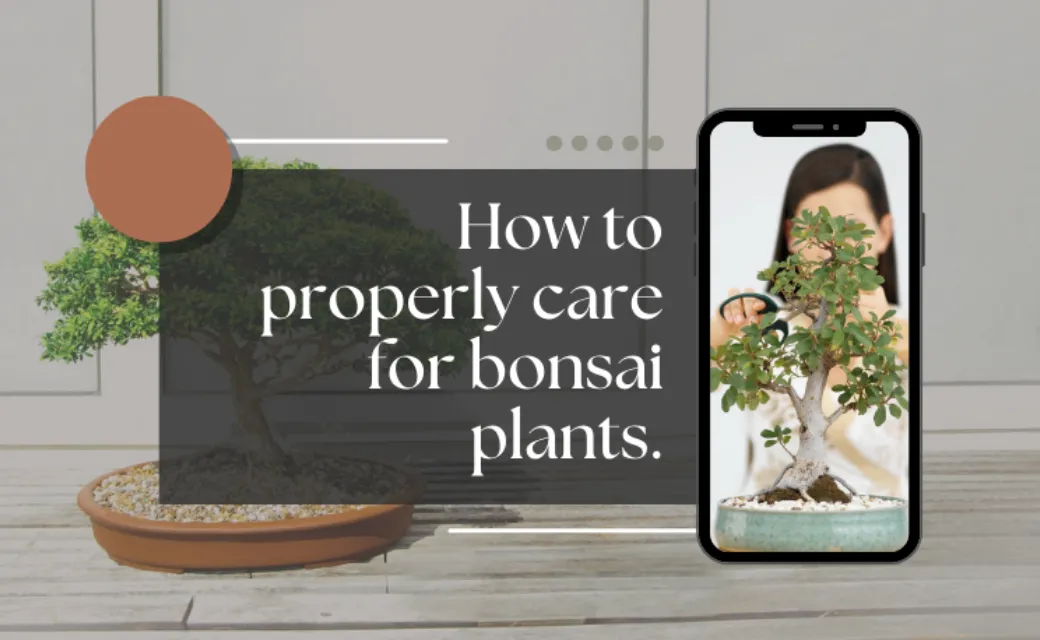How to Take Good Care of Bonsai Plants: A Complete Guide
Bonsai is not a plant; it's a living work of art that needs attention, patience, and commitment. Whether you're a novice or a veteran bonsai enthusiast, learning the basics of bonsai care will enable you to grow exquisite mini-trees that bloom beautifully. Here's a complete guide on how to take good care of your bonsai plants.
1. Understanding Your Bonsai
Before discussing care methods, it's necessary to know the species of bonsai. Most common ones are:
Ficus : Resilient and easy to care for, a great choice for a beginner.
Juniper : Well suited for outdoor bonsai, with exquisite foliage.
Maple : Well valued for its autumn colors and elegant shape.
These species all have particular light, water, and temperature needs, so get to know your bonsai's requirements.
2.Light Requirements
Indoor Bonsai
Bright, Indirect Light : Position your bonsai against a south window to give them plenty of indirect light. Where natural light is scarce, utilize grow lights.
Avoid Direct Sun : Direct sunlight will burn leaves, so have your bonsai protected during hottest sun periods.
Outdoor Bonsai
Morning Sun, Afternoon Shade : Put outdoor bonsai where they can get sunlight in the mornings and shade in the afternoons, particularly in warmer regions.
3.Watering
Proper watering is critical for bonsai health:
Check Soil Moisture : Stick your finger into the soil about an inch deep. If it feels dry, it’s time to water.
Water Thoroughly : Water until it drains from the bottom of the pot to ensure that all roots receive moisture.
Avoid Overwatering : Ensure your pot has drainage holes and never allow your bonsai to stand in water, as this will cause root rot.
Tip: In dry periods, use a humidity tray under the pot to assist with keeping it moist.
4. Soil
Selecting the correct soil is important for bonsai success:
Well-Draining Mix : Utilize a bonsai soil mix that is designed for good drainage with moisture retention. Akadama, pumice, and lava rock are good ingredients.
Repotting : Repot bonsai every two years, usually in spring. This renews the soil and provides space for root growth. When repotting, remove circling roots.
5.Fertilizing
Frequent fertilization ensures healthy growth:
Balanced Fertilizer : Utilize a balanced, water-dissolvable plant food during grow season (summer and spring). Dilute it according to instructions and use accordingly.
Reduce Feeding in Dormancy : Avoid or reduce the feeding during the fall and winter when the succulent is not growing.
Tip:
Organics, such as fish emulsion or worm casting, can introduce useful nutrients.
6. Pruning and Wiring
Pruning
Regular Maintenance : Prune new growth to keep the plant bushy and in shape. Concentrate on trimming back shoots and taking out dead or yellowing leaves.
Leaf Pruning : In some species, taking out the larger leaves encourages the growth of smaller leaves, improving the look.
Wiring
Shaping : Utilize aluminum or copper wire to bend and arrange branches. Avoid hurting the bark, and check the wire regularly to make adjustments as needed.
7. Pest and Disease Management
Regularly check your bonsai for diseases and pests:
Inspect Regularly : Check for pest signs such as aphids, spider mites, or mealybugs. Catch them early.
Natural Remedies : Treat infestations with insecticidal soap or neem oil. Always test on a small area first.
Tip:
Keeping good air circulation around your bonsai will prevent fungal diseases.
8. Seasonal Care
Adjusting your care routine seasonally is essential:
Winter Care : Keep outdoor bonsai safe from freezing temperatures by relocating them to a covered space. Bonsai in the house may need less frequent watering when it is dormant.
Spring Awakening : As the temperatures warm up, resume normal watering and fertilization to encourage new growth.
9.Patience and Observation
Bonsai care is a skill that is learned over time:
Observe Your Plant : Pay attention to your bonsai’s response to care. Adjust light, water, and feeding as needed based on its growth patterns.
Keep Learning : Each bonsai is unique. Engage with online communities or local bonsai clubs to share experiences and learn from others.
Tip:
Maintain a care journal to track your bonsai’s growth and your care techniques over time.
Conclusion
Taking care of bonsai trees isa fulfilling experience that marries art and gardening. With knowledge of their requirements and time spent on proper maintenance, you can develop beautiful small trees that flourish and add elegance to your environment. Take the experience, and sit back and enjoy as your bonsai grows!

















